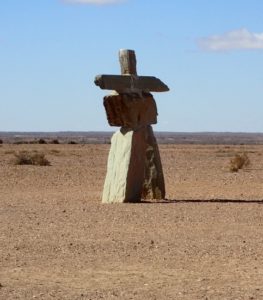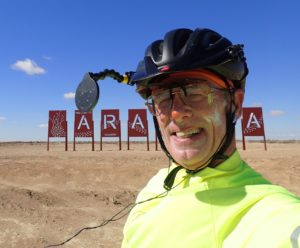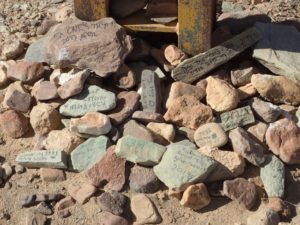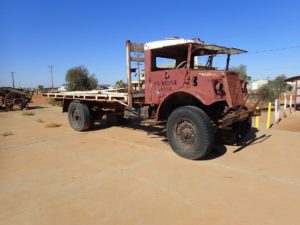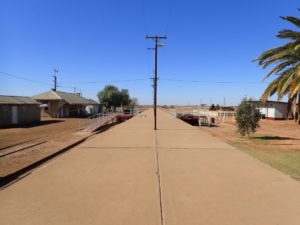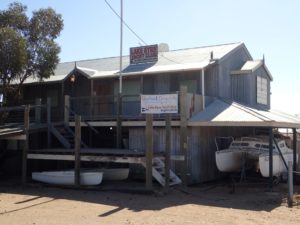
May 10, 2019
After a day of being blasted by horizontal rain and strong headwinds this day was different. The winds were ever in our favour as we left Leigh Creek on the road to Marree. The weather was crisp but the sun was bright, the wind right and all was a delight with our world.
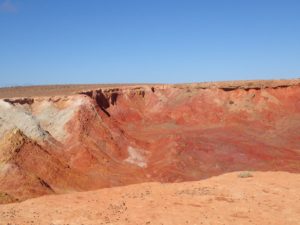
A few tens of kilometres down the road we came to the old settlement of Farina. While not much to look at today it once was an ambitious settlement. It started in 1882 as a rail-head for moving wool and livestock. At one time the cattle baron, Sidney Kidman moved 18,000 head of cattle through the town. Sheep shearers would pick up their bicycles here for the trek to outlining sheep stations. While hard to see today this was once an important transportation and economic centre on the edge of the Outback. Today it is mostly abandoned.
Our final destination was the historic Marree Hotel in the railway town of Marree. The town serves as an oasis for those heading into the Outback via the Birdville Track. It is your last chance to load up with supplies to head into the great beyond.
Layover in Marree
May 11, 2019
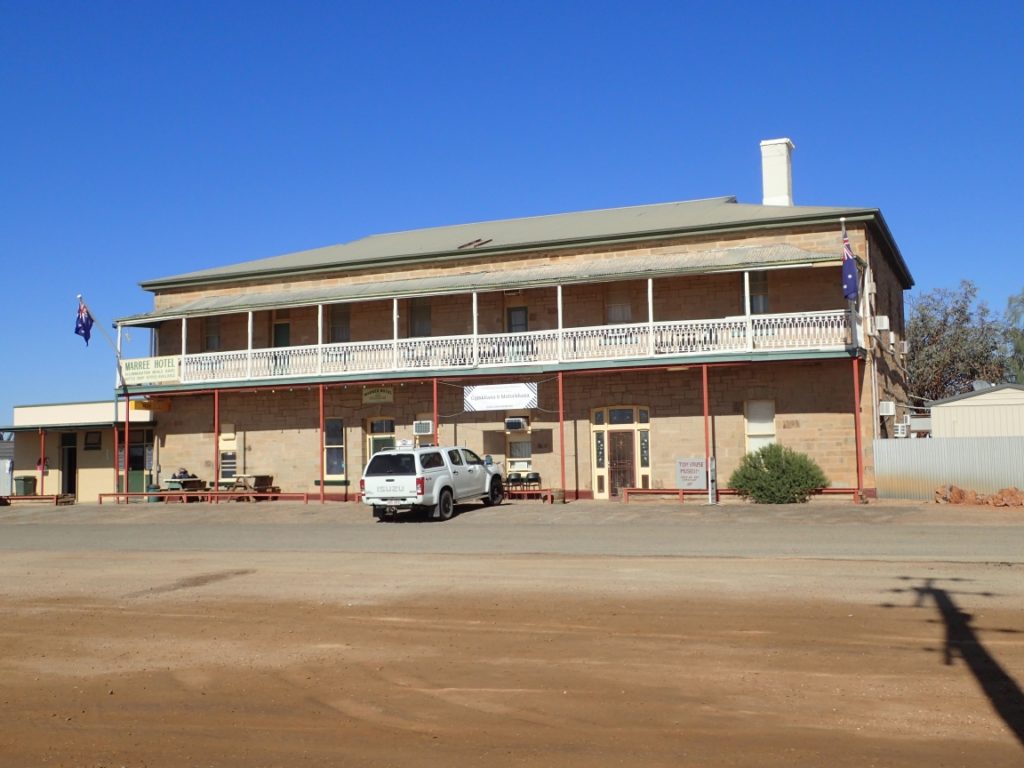
A low key day today tucked into a tiny camping area outside the Marree Hotel. No sense in laying in my sleeping bag longer than necessary so I took off to see what sights there were to see.
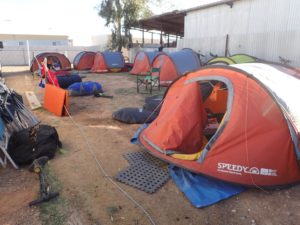
First was the Tom Kruse Museum at the hotel. Here I found the story of this legendary Australian who drove the Outback delivering the mail in conditions most would find impossible. His vehicle was heavily customized and modified to fit conditions for which motorized vehicles were not intended in this era before four wheel drives. A breakdown where he travelled could meant death if you did not have the resources and determination to get yourself out of a jam. His life was celebrated in the film, Outback and Beyond.
My next stop was the historic railway station now abandoned and turned into a museum. In Marree two rail lines of different gauges met requiring passengers and cargo to be moved from one line to the other or the trip south or north. Coal was also moved along the Gahn Railway until the abandonment of coal as a means of generating electricity drove the last spike into the railway’s long history.
Just up the road a bit is the Marree Yacht Club which is as close to a living oxymoron as you are likely to find in this arid region. Only when the southern portion of Lake Eyre is filled is there any aquatic surface for a yacht to traverse and this is a rare event. It appears that South Lake Eyre is more famous as a salt flat where the British super car, Bluebird once tried to set a land speed record. Unfortunately this was attempted during one of the rare periods when the lake was moist.
Marree’s day as a communications and transportation hub appear to be in its past. Gone is Ghantown once home to 60 Afghan cameleers, their families and over 1500 camels. These people and their beasts were imported in the hope that the camels would be a useful means of transportation in this dry land. Today the camels have returned to their wild ways and can be seen wandering the arid acres of the Outback.


